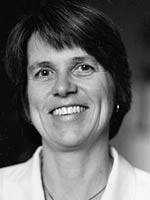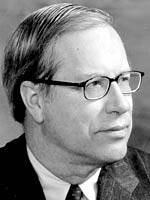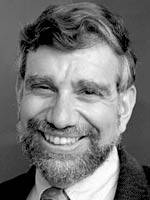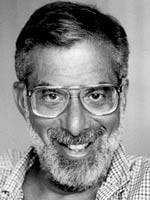Five MIT faculty members have been elected to the National Academy of Sciences, one of the highest honors accorded to a scientist or engineer. This brings the number of MIT members to 110.
The MIT professors were among 72 new members cited for their "distinguished and continuing achievements in original research." There are now 1,979 active members of the Academy. The election took place at its annual meeting in Washington on April 29.
The new MIT members are:
Sallie E. Chisholm, the Lee and Geraldine Martin Professor of Environmental Studies, and co-director of the Earth System Initiative.
Chisholm has a joint academic appointment in the Department of Civil and Environmental Engineering and the Department of Biology. She received a B.A. in biology and chemistry from Skidmore College in 1969 and a Ph.D. in biology from the State University of New York at Albany in 1974. She joined the MIT faculty in 1976. Chisholm is a fellow of the American Academy of Microbiology and the American Academy of Arts and Sciences and a member of the International Ecology Institute. In 1991 she received the Rosenstiel Award in Oceanographic Science from the University of Miami's Rosenstiel School of Marine and Atmospheric Science for her work on regulation of cell division cycles in plankton.
David G. Forney Jr., adjunct professor in the Department of Electrical Engineering and Computer Science.
Forney received his undergraduate degree from Princeton in 1961 and his doctorate from MIT in 1965. His career has centered on information theory and its applications in data communications, particularly in high-speed telephone-line modems. In 1965 he joined Codex, a startup company in data communications, and later served as vice president for research and development and director. After Motorola acquired Codex in 1977, Forney was a vice president of Motorola until his retirement in 1999. He has held many positions with the IEEE Information Theory Society, including president and editor-in-chief of the IEEE Transactions on Information Theory. His honors include the 1992 IEEE Edison Medal, the 1995 IEEE Shannon Award, and the 1997 Marconi International Fellowship. He was elected to the National Academy of Engineering in 1983 and to the American Academy of Arts and Sciences in 1998.
Rudolf Jaenisch, a founding member of the Whitehead Institute and professor of biology at MIT
Jaenisch received his doctorate in medicine from the University of Munich in 1967. He came to the Whitehead from the University of Hamburg in Germany, where he was head of the Department of Tumor Virology at the Heinrich Pette Institute. Jaenisch is a fellow of the American Academy of Arts and Sciences and the American Academy of Microbiology and a member of the American Association for the Advancement of Science, the International Society for Stem Cell Research, the DNA Methylation Society, and the Cold Spring Harbor Laboratory board of trustees. He received the Boehringer Mannheim Molecular Bioanalytics Prize in 1996 and was the first recipient of the Peter Gruber Foundation Award in Genetics in 2001. Last year he was awarded the Robert Koch Prize for Excellence in Scientific Achievement, and he received the Charles Rodolphe Brupbacher Foundation Cancer Award earlier this year.
Paul L. Schechter, the William A.M. Burden Professor of Astrophysics.
Schechter is an observational astronomer who studies galaxies and clusters of galaxies and the distribution of dark matter therein. Schechter earned the A.B. from Cornell in 1968 and the Ph.D. from Caltech in 1974. He served on the faculty at Harvard and the staffs of the Kit Peak National Observatory and the Mt. Wilson and Las Campanas Observatory before coming to MIT in 1988. For the last several years he has been carrying out ground-based optical and Hubble Space Telescope observations of the mirages produced by extragalactic gravitational potentials. Schechter is MIT Director for the Magellan Telescopes, a pair of 6.5m telescopes recently completed in Chile by a consortium of five educational institutions. Schechter played a leading role in the design and implementation of the system which monitors and actively controls the shapes of the telescopes' primary mirrors.
Robert J. Silbey, professor of chemistry for 37 years.
Silbey is internationally recognized for his contributions to theoretical chemistry. Before he was appointed dean of the School of Science in December 2000, Silbey headed the Center for Materials Science and Engineering, and he was head of the Department of Chemistry from 1990-95. He the Class of 1942 Professor of Chemistry in 1989. Silbey earned the B.S. from Brooklyn College in 1961 and the Ph.D. from the University of Chicago in 1965. A MacVicar Faculty Fellow, he received the School of Science Teaching Award in 1986 and a Graduate Student Council Teaching Award in 1988. He is a Fellow of the American Academy of Arts and Sciences, the American Association for the Advancement of Science and the American Physical Society.









